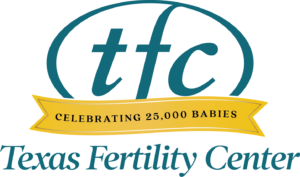
Intracytoplasmic sperm injection can help overcome a very low sperm count
Sperm are an essential part of human reproduction. For fertilization to occur, there must be enough motile (moving) sperm to travel to the egg and then penetrate its shell. When a man has a low sperm count or low motility, fertilization can be more difficult. Thankfully, Erika Munch MD and Eric Han MD, our San Antonio fertility specialists, offer in vitro fertilization, including intracytoplasmic sperm injection, or ICSI, to help men overcome male infertility and become fathers.
With mild male infertility, our San Antonio fertility doctors can occasionally use simpler treatments, such as intrauterine insemination (IUI). This treatment, also known as artificial insemination, can improve the chances of fertilization and pregnancy. However, when a man’s sperm count is very low, our doctors may recommend in vitro fertilization (IVF) with ICSI.
What does IVF look like?
During an IVF cycle, the female partner uses fertility medications (usually in the form of injections) for about 10 to 14 days to stimulate the ovary to make many eggs. Because not every egg and sperm result in a baby, the best chances for pregnancy are during a controlled ovarian stimulation. Learn more about the IVF stimulation and egg retrieval process here.
Once the eggs are retrieved from the ovary, they can be introduced to sperm. The male partner will collect a specimen, which can be used that same day to fertilize the eggs. After 18 to 22 hours, embryologists can assess whether normal fertilization occurred.
For couples doing IVF with normal sperm counts and normal motility (movement) and morphology (shape), conventional insemination can be performed with good outcomes. This is when the sperm are introduced to the egg, and natural selection occurs for proper fertilization rates.
But conventional IVF isn’t right for everyone. If a man’s sperm doesn’t meet the strict requirements for this type of cycle, our San Antonio fertility doctors will likely recommend intracytoplasmic sperm injection, or ICSI.
What does IVF look like with intracytoplasmic sperm injection?
If a man has a very low sperm count, or there are concerns about sperm quality, ICSI may be able to help. Once the eggs are retrieved and are ready to be exposed to sperm, our embryologists will remove the cumulus cells from around the egg. They will then examine the eggs to determine which ones are mature and ready for fertilization. When it’s time for ICSI, they will use a tiny needle to inject a single sperm into each mature egg.
This procedure bypasses the sperm’s need to penetrate the shell and the many layers to get to the egg’s nucleus and DNA. ICSI requires a high level of technical skill, and each of our embryologists performing ICSI has specialized training to perform this task. Keep in mind that intracytoplasmic sperm injection does not guarantee successful fertilization. However, it does give each mature egg a better chance of being fertilized when male infertility issues are identified.
ICSI treatment is also recommended in IVF cases in which genetic screening for inheritable conditions is being performed, called preimplantation genetic testing for monogenic disorders (PGT-M). Since checking for genes associated with conditions such as cystic fibrosis, Tay-Sachs or Huntington’s disease requires a high level of precision, ICSI is performed in these cases. Selecting one sperm at a time, instead of multiple sperm competing to fertilize, helps avoid genetic contamination from those extra sperm that could result in errors during genetic testing.
If you would like to learn more about advanced fertility treatments such as IVF with intracytoplasmic sperm injection, contact us to schedule an appointment. Our San Antonio fertility doctors can help you learn more about your family-building options and get you on the right path to a successful pregnancy.



